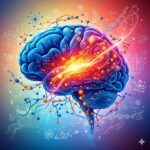Communicating Responsibly About Autism Research

What Science Knows About Autism
Autism Spectrum Disorder (ASD) is a complex neurodevelopmental condition characterized by differences in social communication, behavior, and sensory processing (Zeidan et al., 2022). Scientific understanding of autism has advanced considerably, but many aspects remain under study.
Causes of Autism
Genetic Factors:
- Studies of twins and families show autism is highly heritable, with multiple genes involved (Almandil, 2019).
- Rare genetic mutations or copy number variations (CNVs) can increase the risk of ASD.
- Some genes implicated in autism affect brain development, synaptic connections, or neurotransmitter signaling.
Environmental Factors:
- Prenatal exposures (such as maternal infections, certain medications, or complications during pregnancy) may slightly influence risk (Pugsley et al., 2022).
- Maternal health, nutrition, and environmental toxins are areas of ongoing research.
- These factors interact with genetic predispositions to influence outcomes.
Diagnosis and Prevalence
- Autism is typically diagnosed in early childhood, although some individuals are identified later (Shaw et al., 2025).
- Signs include difficulty with social interaction, repetitive behaviors, restricted interests, and differences in sensory processing.
- Prevalence estimates have risen over time, largely due to better awareness, broader diagnostic criteria, and improved screening, rather than a sudden increase in occurrence (Zeidan et al., 2022).
Brain and Biological Research
- Neuroimaging studies show differences in brain connectivity and structure in people with autism, particularly in areas involved in social cognition, communication, and sensory processing (Ecker et al., 2015).
- Research suggests altered synaptic signaling and neural circuit development, but no single biological marker defines autism.
Myths vs Facts
- Vaccines: Multiple large studies and meta-analyses confirm no causal link between vaccines and autism (Johns Hopkins Bloomberg School of Public Health, 2025).
- Acetaminophen (Tylenol) use during pregnancy: Some studies have suggested a possible association with neurodevelopmental outcomes, but evidence is inconclusive and may be influenced by confounding factors. High-quality sibling-control studies show no increased risk (FDA, 2025; ACOG, 2025).
- Environmental toxins: Some exposures may contribute slightly to risk, but they interact with genetics; they are not primary causes (Pugsley et al., 2022).
Intervention and Support
- Early intervention and therapy can improve outcomes in social communication, behavior, and adaptive skills.
- Common evidence-based approaches include behavioral therapy, speech and language therapy, occupational therapy, and educational supports tailored to the individual.
Ongoing Research
- Scientists continue to study genetic contributions, environmental interactions, and brain mechanisms.
- Large-scale studies aim to identify subtypes of autism, predict outcomes, and develop more personalized interventions.
- Ethical and unbiased research is critical to separate evidence-based conclusions from myths or politically influenced claims.
Why Do Myths Persist?
Despite decades of research, myths about autism continue to circulate because they are often easier to understand and share than the complex reality of autism spectrum disorder. Scientific findings take time to reach the general public, and the nuance of those findings is sometimes lost in translation. The mechanisms of autism are multifaceted, involving genetic, neurological, and environmental factors, which makes simple explanations less satisfying or harder for many people to grasp.
Meanwhile, simple but misleading explanations, such as blaming parenting styles or vaccines, spread quickly through media, word of mouth, or social networks. These narratives often offer a clear cause and effect story, which is psychologically appealing even if it is inaccurate. Once established, such beliefs can be difficult to correct because they become part of people’s mental framework and are reinforced each time they are repeated, especially when echoed by influential voices or tied to strong emotions like fear, guilt, or anger. The combination of complexity, emotional resonance, and repeated exposure allows these myths to persist despite a growing body of scientific evidence that contradicts them.
How to recognize myths vs facts
Recognizing the difference between myths and facts about autism requires critical thinking, credible sources, and awareness of common misconceptions.
Here are some practical strategies:
Check the source: Reliable information comes from scientific studies, peer-reviewed journals, or reputable organizations such as the Centers for Disease Control and Prevention, the National Institute of Mental Health, or recognized autism advocacy organizations. Be cautious of claims from social media posts, blogs, or public figures without scientific expertise.
Look for evidence: A fact will be supported by research or data. Myths, in contrast, are often anecdotal, rely on personal stories, or make sweeping generalizations without supporting evidence.
Consider scientific consensus: If the majority of experts in the field agree on a finding, it is more likely to be accurate. Facts reflect broad scientific agreement, whereas myths often persist because they appeal to emotion or intuition rather than data.
Watch for oversimplifications: Autism is a spectrum disorder with wide variability in behavior and abilities. Statements that categorize all autistic people in the same way, such as “all autistic people lack empathy,” are usually myths.
Stay updated: Scientific understanding evolves over time. What may have been misunderstood in the past can now be clarified by current research. Reliable websites and peer-reviewed journals provide the most current information.
By applying these strategies, readers and caregivers can more easily distinguish between misleading claims and evidence-based facts, fostering better understanding and support for autistic individuals.
Communicating Responsibly
Spreading myths instead of facts can cause significant harm—to parents of children with autism or other neurological conditions, and to adults who have successfully navigated life with autism, ADHD, or other high-intellect neurodiverse traits. Rather than focusing solely on “curing” autism or other neurological conditions, society should prioritize supporting individuals and understanding how they may function differently.
Neurodiversity should not be viewed as a disease. Instead, it is a celebration of unique abilities. Individuals with autism deserve to be recognized for their strengths and “superpowers,” rather than judged for being different. Respectful understanding of these differences is far more valuable than blaming parents for factors such as vaccines or acetaminophen use during pregnancy.
The real path forward for autism is daily doses of love, support, acceptance, and awareness of each individual’s abilities. By promoting education, empathy, and respect, we can help neurodiverse individuals thrive while advancing scientific understanding of these conditions in a responsible and ethical manner.
References:
Centers for Disease Control and Prevention. (2024, December 19). Thimerosal and vaccines. National Center for Emerging and Zoonotic Infectious Diseases. Retrieved September 9, 2025, from CDC website: https://www.cdc.gov/vaccine-safety/about/thimerosal.html
National Institute of Mental Health. (n.d.). Autism spectrum disorder. Retrieved September 9, 2025, from https://www.nimh.nih.gov/health/topics/autism-spectrum-disorders-asd
Advanced Autism Services. (2025, March 15). A brief history and timeline of autism. Retrieved September 9, 2025, from https://www.advancedautism.com/post/history-and-timeline-of-autism
PBS NewsHour. (2025, June 27). What is thimerosal? What the research says about the vaccine preservative under fire by RFK Jr. Retrieved [Month Day, Year], from https://www.pbs.org/newshour/health/what-is-thimerosal-what-the-research-says-about-the-vaccine-preservative-under-fire-by-rfk-jr
Taylor, L. E., Swerdfeger, A. L., & Eslick, G. D. (2014). Vaccines are not associated with autism: An evidence-based meta-analysis of case-control and cohort studies. Vaccine, 32(29), 3623–3629.
Hviid, A., Stellfeld, M., Wohlfahrt, J., & Melbye, M. (2003). Association between thimerosal-containing vaccine and autism. JAMA, 290(13), 1763–1766.
Price, C. S., Thompson, W. W., Goodson, B., et al. (2010). Prenatal and infant exposure to thimerosal and autism. Pediatrics, 126(4), 656–664.
The Guardian. (2010). MMR row doctor Andrew Wakefield struck off register. https://www.theguardian.com/society/2010/may/24/andrew-wakefield-struck-off-gmc?utm_source=chatgpt.com
Prada, D., Ritz, B., Bauer, A. Z., & Baccarelli, A. A. (2025). Evaluation of the evidence on acetaminophen use and neurodevelopmental disorders using the Navigation Guide methodology. Environmental Health, 24, 56. https://doi.org/10.1186/s12940-025-01208-0. Here is a link to the creative commons for their paper. https://creativecommons.org/licenses/by-nc-nd/4.0/
Ahlqvist, V. H., Sjöqvist, H., Dalman, C., Karlsson, H., Stephansson, O., Johansson, S., Magnusson, C., Gardner, R. M., & Lee, B. K. (2024). Acetaminophen use during pregnancy and children’s risk of autism, ADHD, and intellectual disability. JAMA, 331(14), 1205–1214. https://doi.org/10.1001/jama.2024.3172
Almandil, N. B. (2019). Environmental and genetic factors in autism spectrum disorder. Frontiers in Neuroscience, 13, 119. https://doi.org/10.3389/fnins.2019.00119
ACOG. (2025). ACOG affirms safety and benefits of acetaminophen during pregnancy. https://www.acog.org/news/news-releases/2025/09/acog-affirms-safety-benefits-acetaminophen-pregnancy
Ecker, C., et al. (2015). Neuroimaging in autism spectrum disorder: Brain structure and function. Lancet Psychiatry, 2(4), 309–319. https://doi.org/10.1016/S2215-0366(15)00001-2
FDA. (2025). FDA responds to evidence of possible association between autism and acetaminophen use during pregnancy. https://www.fda.gov/news-events/press-announcements/fda-responds-evidence-possible-association-between-autism-and-acetaminophen-use-during-pregnancy
Johns Hopkins Bloomberg School of Public Health. (2025). The evidence on vaccines and autism. https://publichealth.jhu.edu/2025/the-evidence-on-vaccines-and-autism
Pugsley, K., et al. (2022). Environmental exposures associated with elevated risk for autism. Nature Reviews Neuroscience, 23(11), 658–673. https://doi.org/10.1038/s41380-021-01142-w
Shaw, K. A., et al. (2025). Prevalence and early identification of autism spectrum disorder. MMWR Surveillance Summaries, 74(2), 1–16. https://doi.org/10.15585/mmwr.ss7402a1
Zeidan, J., et al. (2022). Global prevalence of autism: A systematic review update. Autism Research, 15(5), 842–858. https://doi.org/10.1002/aur.2674
Disclaimer
This article, “Communicating Responsibly About Autism Research,” is intended for educational and informational purposes only. It summarizes current scientific evidence but is not a substitute for professional medical advice, diagnosis, or treatment. Readers should not rely solely on this content when making healthcare decisions and are encouraged to consult qualified healthcare providers for guidance specific to their situation. While efforts have been made to ensure accuracy, the author assumes no responsibility for errors, omissions, or outcomes related to the use of this information. The author has no financial or commercial conflicts of interest related to the topics discussed.







